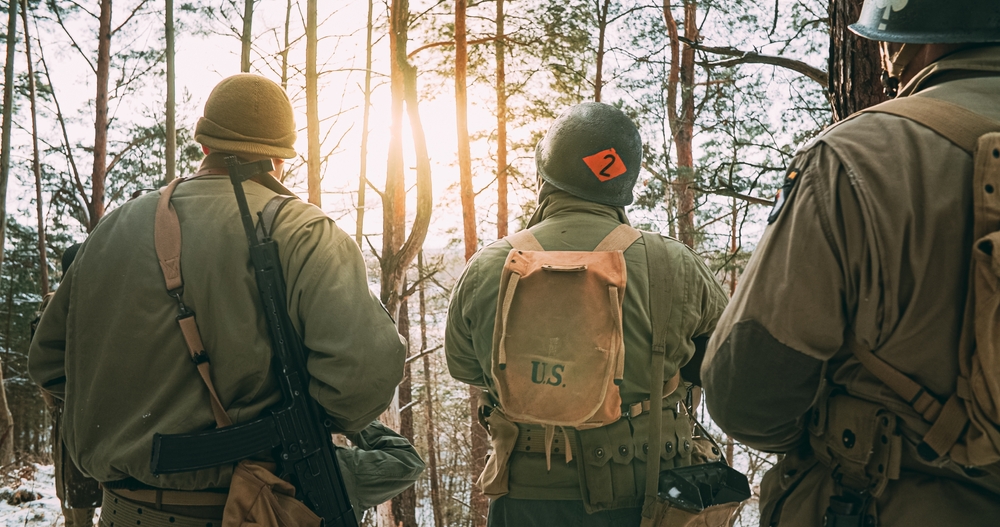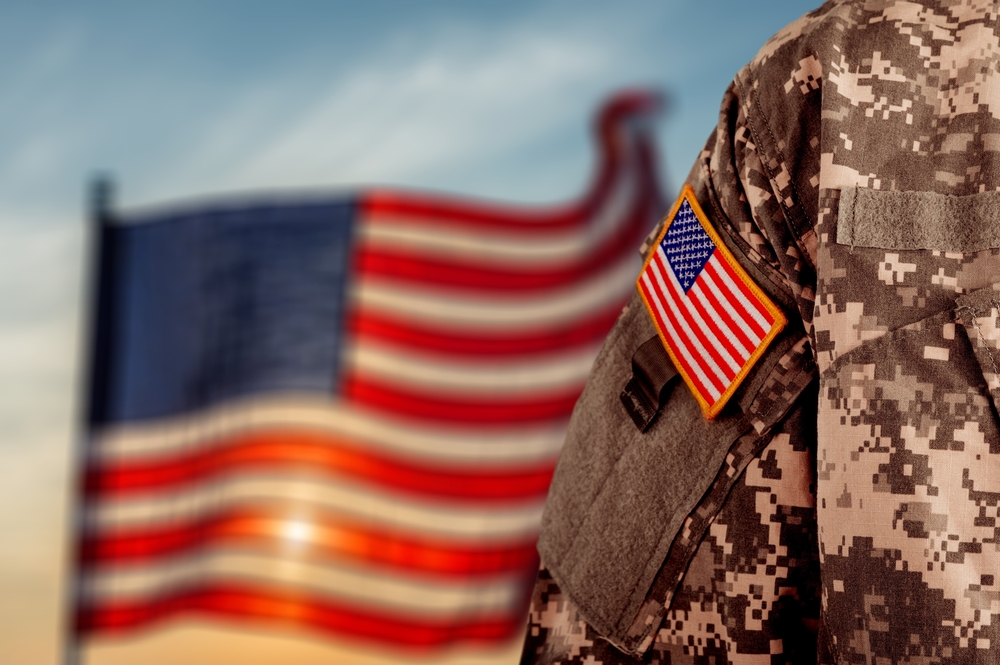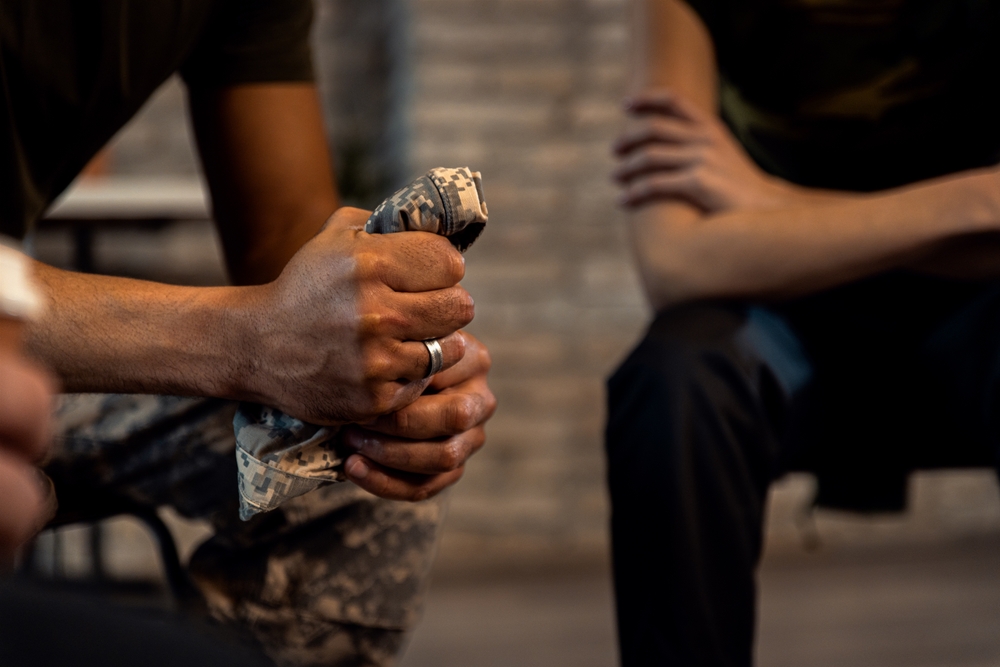When we evaluate the effects of war, we tend to focus on the loss of life and physical wounds that were not fatal for the soldiers and civilians caught up in the fighting. But, the psychological impact of war can have devastating and long-lasting consequences for survivors. This phenomena was less understood in previous conflicts and the language used to describe it was clumsy and vague. Some of the terms used in past wars included: nervous breakdown, battle fatigue, shell shock, soldiers’ heart, and more.
However, it is important to take a closer look at how the mental trauma caused by war has influenced psychiatry and the public perceptions on mental health.
“Cowardice”, “Moral Weakness” or Something Else?
From the American Civil War (1861-1865), then the Franco Prussian War (1870-1871) in Europe and the years leading up to the start of World War I (1914-1918,) there was virtually no understanding of mental health consequences brought on by warfare.

A collection of symptoms had been identified, such as anxiety, fatigue and heart palpitations, but they were believed to be related to the heart or nervous system. No mental component was considered, but mental distress caused by combat was on the rise.
The conflict in this time saw the first appearances of highly effective artillery and mortar bombardments and the dreaded machine guns. Entire platoons of soldiers could disappear in an instant, long lines of troops marching into battle and cavalry charges were becoming a thing of the past. The only way for a soldier to survive was to dig a deep trench, get in it and hope for the best. The increasing volume of mental distress would be viewed through a moral lens rather than a medical condition. It may have been categorized as a failure of leadership or the soldier could have been punished for cowardice!
The Great War (WWI)
This “War to end all wars” which for the most part ended in 1918 was a conflict that resulted in massive slaughter for the soldiers that had to fight it. This was the first full fledged conflict that pitted men against mechanized killing techniques. Soldiers faced massive artillery barrages, chemical gas attacks, minefields, barbed war, machine guns and even aerial attacks from early aircraft and airships. This is the war in which tanks were invented that could roll right over a prepared position and cause mayhem.
Even in the first year of the war, British doctors began to notice cases of spontaneous blindness, paralysis, nightmares, mutism, extreme anxiety and tremors. These phenomena were attributed to the concussive shock waves caused by the large artillery barrages. It was believed that the blast waves from the shells were causing brain damage. This is the source of the term shell shocked, but this was quickly dismissed as soldiers that had not been shelled experienced similar medical issues.
| Era & Conflict | Term Used | Symptoms Reported | Perceived Cause | Medical Response | Social Perception |
|---|---|---|---|---|---|
| WWI (1914–1918) | Shell Shock | Tremors, paralysis, nightmares, anxiety, mutism | Exposure to exploding shells and trauma | Limited treatment; rest, sedation, sometimes punishment | Often seen as cowardice or malingering |
| WWII (1939–1945) | Battle Fatigue | Fatigue, confusion, inability to function in combat | Emotional exhaustion from prolonged combat | Temporary removal from front lines, rest | Viewed with more empathy but still stigmatized |
| Korean War (1950–1953) | Combat Stress | Irritability, insomnia, depression, detachment | Cumulative effect of combat stress | Field hospitals, brief therapy sessions | Mixed views; often minimized or ignored |
| Vietnam War (1955–1975) | Post-Vietnam Syndrome | Flashbacks, substance abuse, aggression, social withdrawal | Moral injury and trauma from guerrilla warfare and homecoming | First widespread use of talk therapy and group therapy | Often misunderstood; linked to antiwar stigma |
| Post-1980 (Post-DSM-III) | PTSD (Post-Traumatic Stress Disorder) | Hypervigilance, flashbacks, nightmares, emotional numbing | Psychological trauma from any life-threatening event | Cognitive Behavioral Therapy (CBT), EMDR, SSRIs | Growing recognition; reduced stigma over time |
| Modern Day (2000s–present) | PTSD (with Complex PTSD variant) | Mood swings, relationship issues, memory problems, physical symptoms | Prolonged or repeated trauma (e.g. combat, abuse) | Trauma-informed care, virtual therapies, peer support | Increasing public awareness, especially among veterans and first responders |
A new theory posited that these medical problems were caused by psychological trauma. Yet the term shell shocked remained and it was subsequently used to describe all war related neuroses.
This was debated amongst medical professionals and it sparked several intriguing questions: Was this simple cowardice? A response to massive stress? An act of moral failure? These questions are an affront to our moral sensibilities, but this is how many people in positions of power viewed mental trauma at that time. Many soldiers were executed for desertion after they’d suffered a psychological breakdown!
The medical response was clumsy and cruel, some soldiers were subject to electric shock therapy to shake them out of paralysis. The only positive that came out of this horrendous situation is that shell shock had entered the public lexicon. Yes, it is a clumsy term, but at least there was some acknowledgement that war could affect the body and the mind of those affected by it. This laid the fragile groundwork for what would become modern trauma theory as we understand it today.
The Interwar Years
After the guns fell silent at the end of WWI, shell shock was widely discussed. A number of veterans struggled during these years, but they didn’t get empathy or support from the medical community or the wider public. Psychiatry was still a relatively new field, but efforts were made to create terminology to understand this type of mental trauma.
The work of Sigmund Freud attempted to link unconscious conflict and repressed memories to war neuroses. The stigma remained and military planners keen to prepare for future wars feared that shell shock could affect their efficiency. The militaries in the west even screened men to eliminate potentially “weak” recruits. No serious attempt was made to understand or offer humane care for the veterans.
Combat Fatigue: World War II
During WWII, the topic of psychological trauma came into sharp focus. The militaries of the world seemed better prepared for war and some lessons had been learned. Psychiatrists working with the American forces described the phenomenon as “battle fatigue” or “combat exhaustion” and shell shock was no longer used.

The prevailing theory was that exposure to stress over a long period of time could degrade mental resilience. Previous thinking was focused on acute stress over a shorter time-frame. Neurologist John Spiegel and psychiatrist Roy Grinker studied front-line soldiers and aircrew. They discovered that the normal reaction to sustained danger is an intense stress response. This revelation was used in a new practice known as forward psychiatry that would treat soldiers closer to the front-line to stop chronic disability.
The simple acronym PIE (Proximity, Immediacy, Expectancy) was used to popularize this approach. The key was to deliver care quickly, close to the battlefield and emphasize that fast recovery was likely. A mental breakdown was not viewed as a weakness and PIE did return many soldiers to combat duty. However, after the war, many veterans did return home with psychological issues caused by long-term exposure to combat.
New Diagnostic Language :Korea and Vietnam
After the United Nations committed troops to the Korean War, combat fatigue still persisted as the de facto diagnosis. This was only five years after the end of WWI and it’s not surprising that mental trauma was treated in a similar manner.
This changed after the American intervention in the Vietnam War as the psychological injuries began to stack up in an alarming fashion. This conflict was defined by ambiguous objectives, guerilla warfare, and disdain or outright hostility when the soldiers returned home from this unpopular war.
Back in the States, clinicians began to notice that the soldiers and marines had symptoms that went far beyond battle stress, including intrusive memories, hyper vigilance, emotional numbness, chronic nightmares, and more. An article by psychiatrist Chaim Shatan published by the New York Times in 1974 described the psychological effects on Vietnam veterans. This gave legitimacy to the theory that trauma can be delayed and that it may persist for years after the war has ended.
The Genesis of PTSD
In 1980, due to the advocacy of therapists, researchers and veterans, the American Psychiatric Association presented Post Traumatic Stress Disorder or PTSD in the Diagnostic and Statistical Manual of Mental Disorders (DSM-III). This recognized for the first time that extreme stress could cause a lasting psychological injury. This gave legitimacy to the theory that trauma is a medical condition and not a character flaw.
A veteran became entitled to treatment via the VA system and disability benefits. The public became aware of PTSD and the stigma of psychological trauma was diminished. Due to the messy nature of the Vietnam War, it became clear that trauma could be caused by witnessing atrocities, feeling betrayal, overwhelming guilt, and other forms of moral injury.
The War on Terror: Iraq and Afghanistan
After 9/11, the early years of the 21st century heralded a new era of modern conflicts. The military deployments were frequent and long-term, with psychological pressure caused by guerilla warfare, improvised explosive devices (IEDs), and ambiguous objectives.

The medical advances and body armor did reduce the incidence of fatalities, but many soldiers suffered from psychological wounds and traumatic brain injuries (TBI). According to the the US Dept of Veterans Affairs, 11-20% of Iraq and Afghanistan veterans experience PTSD every year. The blast exposure caused by IEDs created a mix of psychological and physical wounds.
As veterans and families shared their stories, the conversation moved beyond PTSD to moral injuries, TBI, and military sexual trauma. New treatments were researched, such as eye movement desensitization and reprocessing (EDMR), and virtual reality exposure therapy.
Pioneering Trauma-Informed Care
In WWII, the emphasis was placed on treating the soldiers quickly and close to the front lines. This was done to speed up the recovery process and get the solder back into the fight. But, this approach was effective and it was the foundation for what’s now referred to as trauma-informed care. This philosophy can be found as a guiding principle in most of the modern mental health and social services organizations.
There are four key principles.
- Trauma is pervasive and anyone can be affected.
- Physical and psychological safety is the priority.
- Re-traumatization must be avoided.
- People should be empowered to have agency during their treatment.
Although this approach was originally designed to treat soldiers during wartime it is now integrated into other areas, such as schools, hospitals, prisons, homeless services, domestic violence shelters, and more.
The Advances in Diagnosis and Neuroscience
The therapy pioneered in military health care has by extension been a driving force in major advances to understand trauma biology. Since the 1990s, The Dept of Defense and VA has funded extensive research into three major areas.
- Neuroendocrine Changes: This is how the nervous system and endocrine system interact in a variety of contexts, including depression and cortisol dysregulation, which is linked to chronic stress and more.
- Traumatic Brain Injury (TBI): The effects of TBI that often occur with PTSD and may be experienced in combat and in civilian life in road accidents, falls, and other blunt trauma impacts.
- Brain Structures: The study of how the amygdala and hippocampus are involved in how we process fear and memories.
This is vital work that has uncovered biomarkers and neuroimaging that have been used in anxiety, dissociation and depression studies. These stress physiology insights have informed treatments for first responders and trauma survivors. The interplay between psychological and physical injury is now better recognized, improving holistic care.
The Recognition of Moral Injury
We’ve mentioned moral injury a few times up to this point, but for many people this may be a new term that they are unfamiliar with. Going beyond PTSD, clinicians discovered that veterans may have profound ethical and spiritual wounds inflicted by trauma. Moral injury refers to the feelings of shame, guilt and loss that may come from a variety of sources.
- Feelings of betrayal by their command structure.
- Faulting to prevent or witnessing atrocities.
- Taking action in contradiction to deeply held values.
This concept of moral injury came from the perspective of combat, but similar patterns have been noticed in other contexts, such as abuse survivors, first responders, healthcare workers, police officers, and more. This has had an impact on military and civilian care that include therapies with meaning and forgiveness to relieve existential suffering. This treatment will help people to rebuild their sense of purpose which goes far beyond symptom management.
Peer Support Programs
One of the key innovations that came out of how veteran services help soldiers and marines with mental health trauma are peer support programs. This is a recovery community where those affected by war can share their experiences with others. Going through lived trauma with others with similar experiences can be helpful for recovery. Within the military, the inception of these peer support networks was a mistrust of authority and the stigma of speaking with those that hadn’t been in the same situations. The VAs that were formed after the Vietnam War were informal and peer-led mental health spaces where the veteran was free to say anything. In recent years, some of these veteran-run groups have gained prominence for their advocacy and support. A prime example would be the Wounded Warrior Project which uses peer mentorship to help veterans heal.

FAQs
How Has Public Perception Changed?
After more than a century of war, it’s fair to say that the public at large has a fuller understanding of mental health trauma. Back in WWI, a breakdown was regarded as weakness or cowardice. Now, PTSD is widely recognized. There is no stigma, veterans’ support groups are advocacy groups and support platforms.
In modern culture, we have multiple touchstones like the movies American Sniper, The Hurt Locker, and others. Although these are Hollywood movies, they do show human mental trauma and they have provoked discussion. There are still challenges to overcome and some serving soldiers still feel that they’re letting their comrades down if they experience PTSD.
What was the Diagnostic Evolution?
The path from shell shock to PTSD took a considerable amount of time and many mistakes were made along the way. But, as tragic as each of these wars was, they did drive psychiatry forward and in every conflict the diagnostic criteria evolved.
- WWI Shell Shock: Believed to be a physical concussion brought on by enemy artillery.
- WWII Battle Fatigue: The medical community recognizes the psychological depletion.
- Post-Vietnam Syndrome: This early term for what would become PTSD gains traction.
- PTSD: Mental trauma is formally recognized as a disorder.
In recent years, PTSD criteria has been expanded to include the recognition of indirect exposure and dissociative symptoms. A clinician is now more likely to recognize complex PTSD or moral injury that reflect the manifestation of trauma.
What Advances Have Been Made in Treatment?
The treatments evolved alongside the conflict of the time and earlier wars had a crude understanding of mental health issues. Some of the early attempts to cure shell shock were punitive in nature from electroshock “therapy” up to and including a firing squad for cowardice or desertion. But, with each war evidence-based approaches changed how the military and the wider public perceived mental trauma.
There are five advanced treatments in use at this time.
- Prolonged Exposure Therapy: A controlled and gradual confrontation of traumatic memories to understand them.
- Cognitive Processing Therapy: The patient is given tools to help them reframe traumatic memories.
- EMDR: Guided eye movements are combined with recalling memories.
- Pharmacotherapy: SSRIs and other drugs are administered to relieve symptoms.
- Virtual Reality Therapy: The patient is inserted into a simulation to desensitize their traumatic responses.
The potential for other therapies is being explored, including neurofeedback for PTSD that’s treatment-resistant and psychedelic-assisted therapy.
War has always been a driver of technological change, but over the last century it has revealed a great deal about the causes of psychological trauma. With each new conflict, new discoveries were made, the terminology changed and mental health trauma was de-stigmatized. The frameworks that we have today have reshaped on how we deal with mental trauma and formed a broader conversation on care and compassion.








